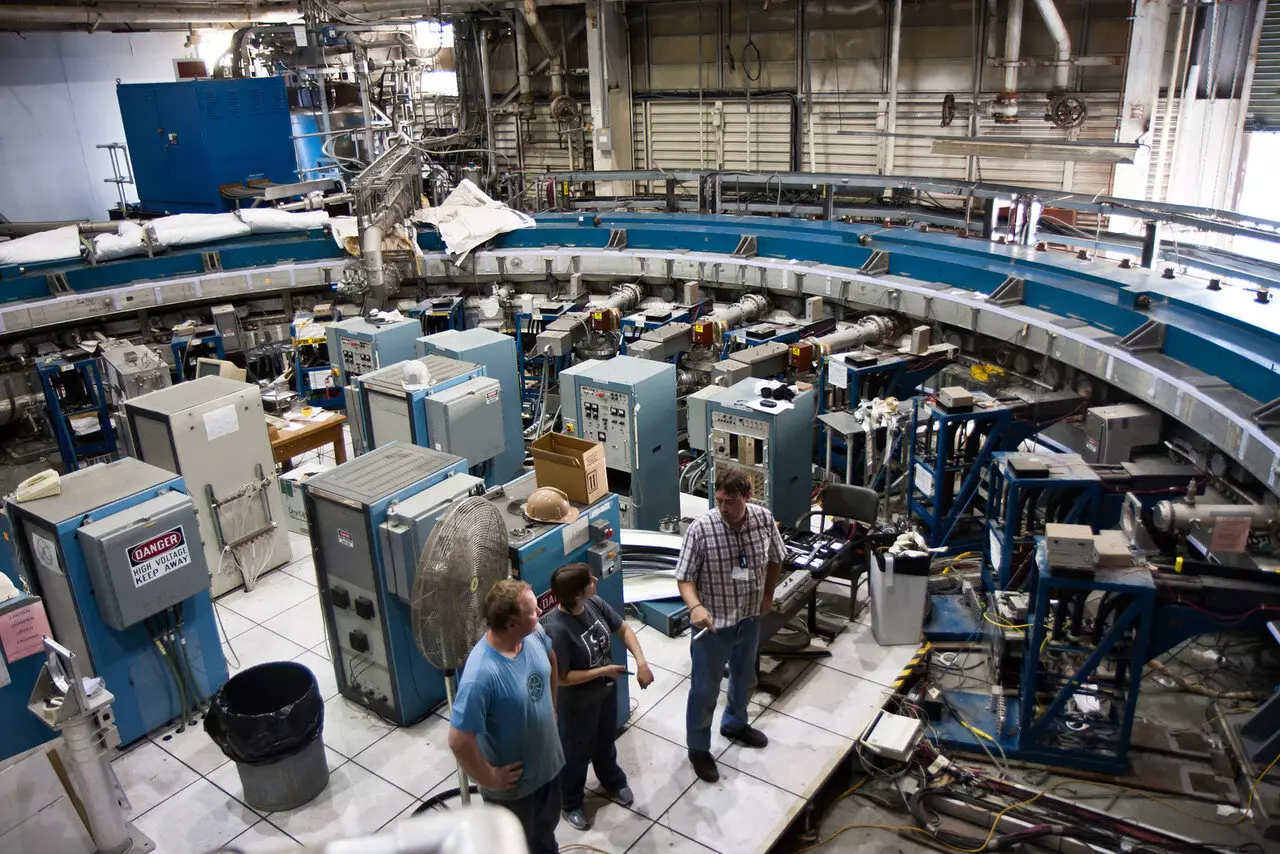In the grand theatre of particle physics, the muon—a heavy relative of the electron—plays a captivating role, providing profound insights into the fundamental workings of the universe. Recently, scientists from the Muon g-2 Collaboration achieved a remarkable breakthrough by measuring the muon’s magnetic moment with an unprecedented level of precision, more than double that of previous records. This effort not only advances our understanding of particle physics but also has implications that stretch beyond the established framework of the Standard Model.
At Fermilab in the United States, physicists propelled muons around a particle storage ring, akin to an Olympic sprinter racing a track. This storage ring is not just a mere loop; it encompasses a magnetic field approximately 30,000 times stronger than that of Earth, creating conditions where the muons precess like spinning tops. The measurement of the muon’s magnetic moment arises from the interaction between the muon’s intrinsic properties and fluctuating virtual particles in the vacuum, revealing an intricate dance of influences at play.
The precision achieved—0.2 parts per million—was made possible by analyzing the precession frequency of the muons against their cycling frequency around the 7.1-meter diameter storage ring. Over the years, the Muon g-2 Collaboration has built upon its earlier work, refining the measurement techniques and handling vast datasets meticulously. The collaboration comprises 181 scientists from seven countries and 33 institutions, showcasing an international effort in the quest for knowledge.
The Journey Through Historical Context
The measurement of the muon’s magnetic moment is not merely a recent endeavor; it is a continuation of a legacy that traces back to 2006, when initial measurements at Brookhaven National Laboratory in New York set the stage for future research. Each subsequent experiment improved upon earlier findings, culminating in this latest result that boasts a precision 2.2 times that of previous efforts from the same group.
Muons, despite being 207 times more massive than electrons, share their electric charge and spin. The journey toward understanding their magnetic moments has been long and intricate, negotiating between experimental data and theoretical frameworks. Physicist Isidor Isaac Rabi’s famous quip—“Who ordered that?”—when discovering the muon in 1936, echoes through the halls of physics, reminding us of the unpredictable nature of scientific discovery.
The Quest for Theoretical Alignment
The theoretical prediction of magnetic moments in leptons like the muon is a confluence of quantum electrodynamics (QED) and its extensions—an effort laden with complexity. While the electron’s magnetic moment has achieved remarkable accuracy, the muon presents unique challenges. Notably, theoretical calculations must account for additional influences such as electroweak interactions and contributions from hadrons within the Standard Model.
The muon’s heavier mass renders it more sensitive to potential new physics, posing exciting possibilities that could reveal phenomena beyond the Standard Model. Speculations encompass theories such as supersymmetry and string theory, all waiting to be validated or refuted through rigorous experimental scrutiny. Yet, as noted by the collaboration, limitations persist, especially in understanding fluctuating vacuum effects originating from strongly interacting particles.
The experimental design at Fermilab involved meticulously timed bursts of muons, with injections occurring every 1.4 seconds. Within this structured timeline, approximately 100,000 positive muons—96% of which were spin-polarized—graced the storage ring. This systematic approach facilitated the collection of vast datasets across multiple runs, contributing to the substantial body of information that the collaboration continues to analyze.
Despite the leap in precision, the complexities surrounding hadronic effects still loom large, indicating that comparisons between experimental measurements and theoretical predictions remain uncertain for now. The challenges faced in reconciling varying experimental results signify an ongoing journey rife with potential setbacks yet laden with opportunity. The collaboration anticipates that additional data, with further analysis, could refine their conclusions, possibly enhancing statistical precision by a factor of around two over the next three years.
As we stand at this pivotal crossroads in particle physics, the improved measurement of the muon’s magnetic moment symbolizes not just a victory in precision but also a doorway to future explorations that might redefine our understanding of the universe. With every advance, scientists inch closer to testing the boundaries of established theories, excitedly poised to unveil the intricate tapestry of particle interactions that underlie reality itself. The journey continues, driven by inquiry and collective intellect, echoing through time in pursuit of the unknown.


Leave a Reply